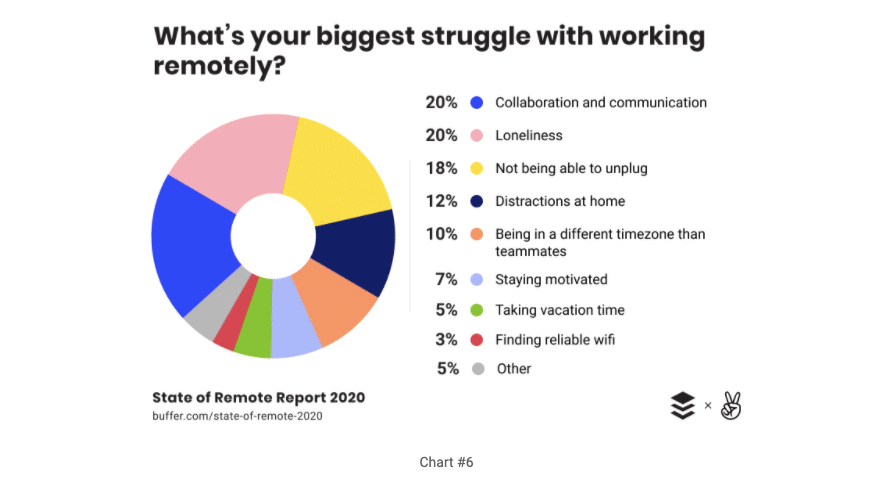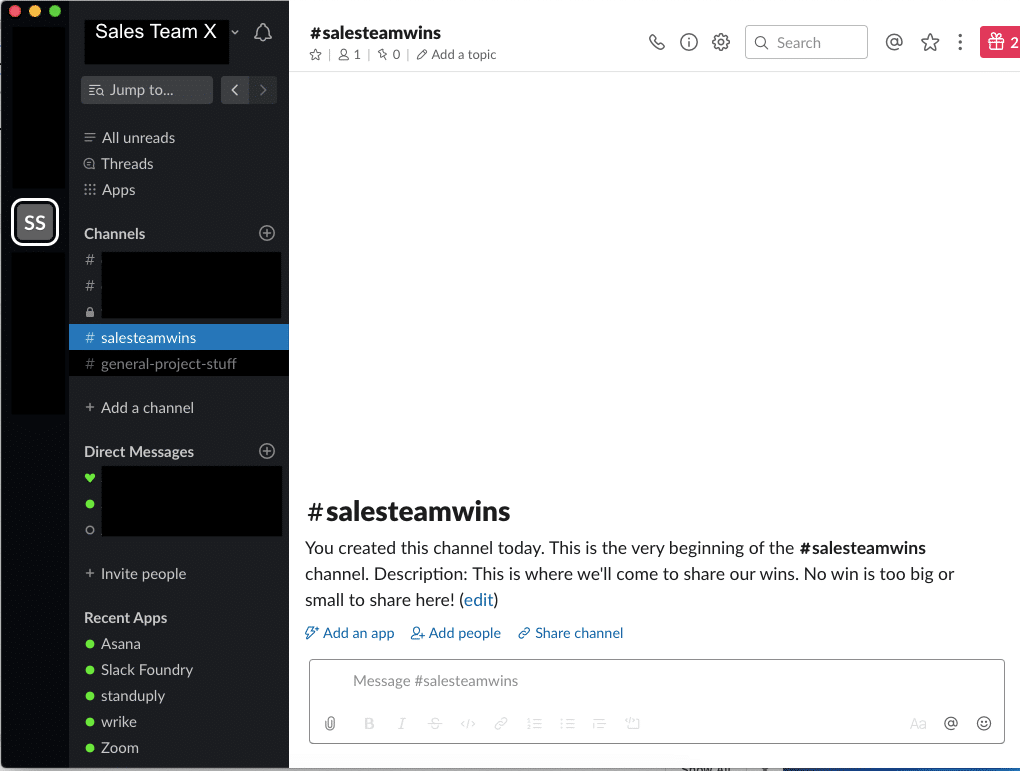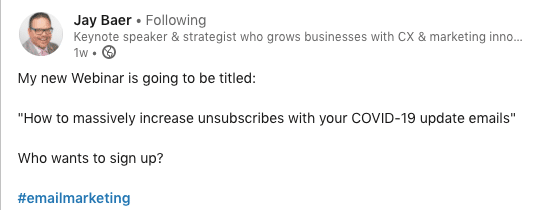Sales and COVID-19: How CSOs and Sales Teams Can Rise to the Challenge

Author: Julia Nymchynska
Businesses around the world are experiencing huge challenges because of COVID-19.
This is a particularly trying time for CSOs. And you’re probably wondering if your company and sales team are going to outlast this virus what with:
- Travel restrictions that prevent salespeople from making real-world connections.
- Employees moving to distracting home-based work environments.
- Hiring freezes stifling sales growth.
- Changes in market demand create major shake-ups in your sales pipeline.
- Waning supplies or diminished support teams making it difficult to fulfill orders.
Needless to say, it’s not an easy time to sell.
So, what do you do? Throw in the towel and wait out the storm? Of course not. These are challenges just like any others you’d face in business. They’re just new and require some creative adjustments.
If you want your sales team to remain organized, productive, and motivated during the COVID-19 pandemic, here’s what you can do:
1. Empower Them to Work More Efficiently with CRM-Email Integrations
As your team moves to a remote work model, it’s going to be a huge adjustment for everyone.
To ease your team’s transition to a different style of working (and environment), arm them with tools that make their jobs easier and that allow them to be more effective in the process.
Take your CRM, for example. On its own, this tool enables your team to collect leads, manage their pipelines, and analyze sales trends.
But combined with email, your team could be working faster and better than it ever has before.
That’s because a CRM-email integration makes much lighter work of selling. And this is 100% necessary during the COVID-19 outbreak. (Heck, it’s necessary when we aren’t faced with a pandemic.)
Here are just some of the ways your reps would benefit from this integration:
- When a conversation begins with a new lead, a new record with their personal information is automatically added to the CRM.
- All sales-related data is captured and saved in the corresponding CRM record for new and existing leads as well as customers.
- When your reps view an email from a lead, they can simultaneously view and edit the corresponding CRM record — right from their email inbox.
- Once leads enter the pipeline, automated follow-up emails will help usher them through next steps without any hand-holding needed from your reps.
- Using your personal appointment booking page, leads can take the initiative and schedule appointments as soon as they’re ready to take the next step.
The best (and easiest) way to create this integration is to use a sales engagement platform. Not only does it bring these two critical sales tools together, but it enhances your workflows within and between them.
2. Keep Your Team Motivated with the Right Resources
It’s not easy to let go of the reins and trust that your salespeople will continue working at their level best when they’re at home. But you have to.
Here’s the thing:
If you set your team up for success, it doesn’t matter where they work from.
So, rather than worry about how much time they spend on sales activities each day, provide them with the tools and resources they need to stay focused.
Before COVID-19 was around, Buffer and Angel List got together to report on the State of Remote Work in 2020. The survey revealed these to be the most common challenges:
The biggest two, not surprisingly, are communication and collaboration and loneliness. But there’s an easy way to kill two birds with one stone:
Your CRM will help, but you also should have a team chat software everyone can connect through, like Slack.
With Slack, you can create channels (conversations) dedicated to different subjects:
- Check in on daily progress and set priorities.
- Collaborate on challenging projects.
- Discuss new strategies — for sales as well as managing work from home.
- Celebrate team wins.
- Support each other through the coronavirus-forced isolations.
Slack also comes with video conferencing capabilities (for teams, not just individuals), so you can hold daily, weekly, or person-to-person calls over it. It definitely beats just getting text messages all the time.
3. Reassess Your Sales Pipeline
While we can’t predict when the virus will be eradicated, and consumers and businesses back to their regular buying habits, we can make adjustments for the new “norm” now.
Take a look at your sales pipeline:
- Are your monthly sales goals still realistic?
- Will additional steps be required to nurture leads until they’re ready to buy?
- Should you seek out a new target audience if it’s impossible or insensitive to sell to your current one?
You can’t keep going business as usual and hope that your sales team will still turn a profit. It’s not going to happen in this environment.
Instead, by carefully examining your pipeline and the processes surrounding it, you can adapt to what the situation calls for. Who knows? You might discover a better approach for the future.
While you should document changes to open deals and projected revenue in your CRM, a sales engagement platform will allow your team to confidently do more in this uncertain time.
Think about it like this:
- By adjusting your central sales playbook, all reps will use the right strategy.
- By updating the average pipeline timelines, your reps won’t feel pressured to close within unreasonable timeframes.
- By enabling automatic notifications, your team won’t have to worry about losing track of leads that might be dragging their feet right now.
In other words, by adapting to what the current environment calls for, your reps can take the time to foster better relationships with leads until everyone is feeling more confident to buy again.
4. Take a New Approach to Prospecting
Just as internally your goals and processes need to change, the way your team engages with prospects needs to change as well.
Here are some things they can do:
Change the pain
It’s no longer about addressing their pain as a buyer. It’s about acknowledging the giant elephant that’s sitting in everyone’s room.
“I hope this message finds you well.
It’s scary to think about how much has changed in a matter of months and, yet, here we are. I realize we initially touched base before the coronavirus decided to wreak havoc on the planet and I didn’t want you to think that I’d forgotten you.
When you have a moment, I’d like to chat and see how things are going with your business. I know you were struggling with [problem] before all this began and I can’t imagine it’s gotten any easier. If you’d like someone to talk to, I’m here.”
Really listen to your prospects
Before it might’ve been okay to assume you knew what prospects needed and how you could get it for them. Now, though, it’s not safe to assume anything.
Now is the time to have more honest and even difficult conversations with prospects.
So, when they respond to your message, connect with them on a human-to-human level. By focusing on relationship-building now, you’ll have a better chance at capturing their business when things have recovered.
That means keeping your business out of it. Show prospects that you care about them and not solely about your bottom line. As Jay Baer recently joked:
Reconnect with existing customers
For business customers that recently bought something from you, they’re likely panicking — not just about the health crisis, but the health of their business.
And if they haven’t started looking at their expenses and wondering where they can trim the fat, they will soon.
With the right tools and processes in place, your team should have more time to reconnect with these existing customers.
“Hi [First Name],
I hope this message finds you well.
I know a lot has changed since we last spoke, which is why I wanted to reach out and see how things are going with your business. [Provide a tidbit like, ‘I know your industry has been hard-hit by the coronavirus, but I saw that…’ and mention something to keep things positive.]
If you feel like chatting, my phone lines are always open!”
By giving that extra personal touch, customers will feel assured that their purchase was the right one… and not something they need to cancel a few months in.
5. Connect with Decision-makers through New Channels
Your sales team might be used to in-person meetings and phone calls with prospects. But that approach isn’t going to be as effective with most people working from home.
Digital is the best way to reach decision-makers as everyone is online reading COVID-19 updates on social media, staying in touch with friends and family, and running their businesses from the cloud.
That said, it’s not sufficient to pivot your team’s conversations from in-person pitches to email.
First, your sales team should position themselves in front of decision-makers by:
- Share posts on professional social profiles (e.g. LinkedIn, Facebook, Twitter).
- Create educational video content for YouTube.
- Create educational blog content for your website, Medium account, or LinkedIn page.
- Host virtual webinars.
- Share presentations on Slideshare.
Then, use email and direct messaging platforms (like Messenger or WhatsApp) to have one-on-one conversations with prospects.
If you’re using a sales engagement platform, you can actually automate these multichannel communications. All you need to do is set which channels you want to contact them through and then program the rules of the engagement: timing, quantity of messages, and so on.
Last but not least, use video conferencing software to take the relationship with prospects to the next-level.
This allows your reps to hear their concerns and objections in real time, and to counter them immediately… not let them sit and fester while they wait for an email response.
Are You Ready to Rise to the Challenge?
As the leader of your sales team, they’re going to look to you for guidance during this crisis. So, you need to be able to steer the ship in the right direction.
Rather than run away or hide from it, expect that everything is going to change. Your processes. The size of your sales pipeline. Your team’s headcount. And then embrace it just as these world-class revenue leaders have.
Change in business and in sales can be good. It allows us to be more flexible, creative, and innovative in order to deal with the most difficult of challenges.
Keep in mind that you’ll need to be the one to absorb as much of the disruption as possible. In doing so, your team can take the stability, structure, and guidance you’ve provided them with and keep things moving in the right direction.
Julia loves all things innovation, productivity, and tech. Currently, she’s helping companies increase their ROE (Return on Customer Engagement) at revenuegrid.com
Experience and a lot of testing have shown us that it is possible to create email templates that people actually resonate with.
You don’t have to figure it out alone, whether you’re starting off as a sales representative, looking to improve your game or providing your team with expert advice, we have your back!


